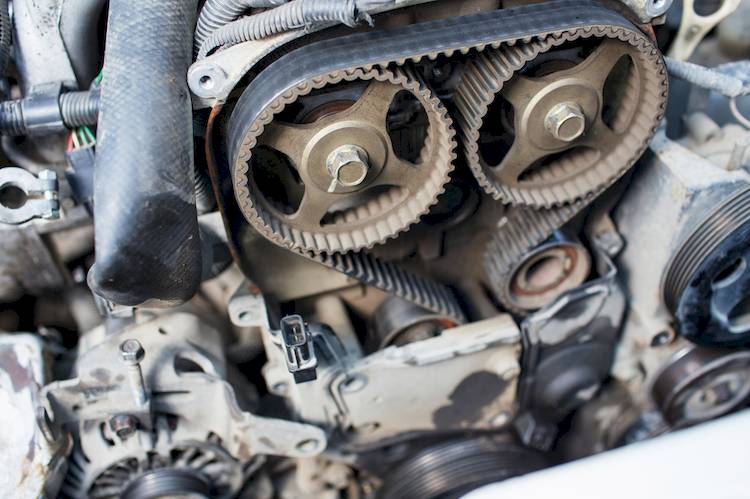

A timing cover protects parts such as the timing belt, timing chain, and gears inside of your vehicle. They are made from either plastic, metal, or a combination of synthetic materials. In modern vehicles, the covers are designed to seal the end of the engine block to keep debris and other unwanted material from getting inside of the engine. Furthermore, the cover helps to keep the various parts inside the engine lubricated with oil.
Located on the front of the engine, the timing cover seals the timing belts where the crankshaft and camshaft extend. This helps to protect the timing belt from getting damaged and help to give it a longer life. On some vehicles, the timing cover is made up of several different pieces to make up one cover.
Over time, the timing cover can become worn, which can be potentially dangerous because of all the parts it protects within the engine. The biggest sign your timing cover is going bad or failing is the engine will start leaking oil. This may be noticed on the garage floor, underneath the vehicle, or you may notice it on your engine when you open up the hood of your vehicle.
As soon as you start to notice leaking oil, is important to contact a professional mechanic to have your timing cover replaced. If you fail to do this, the timing belt may slip off the pulleys and the engine can become severely damaged. It is best to repair the timing cover before this happens because the engine can be a very expensive repair compared to a timing cover replacement.
Since the timing cover can fail over time, you should be aware of the symptoms that indicate the cover is coming to the end of its life.
Signs that indicate your timing cover needs to be replaced include:
A grating sound coming from the engine when the vehicle is running
The engine oil is leaking from the vehicle
Missing timing marks that show up as a decrease in power as you drive up steep inclines
This repair should not be put off because it can severely damage your engine and cause the vehicle to become inoperable.



